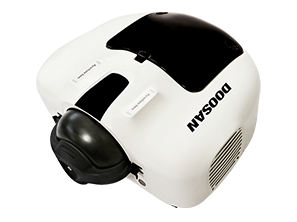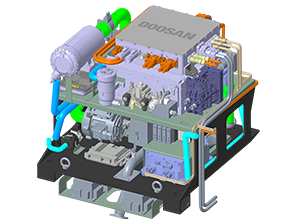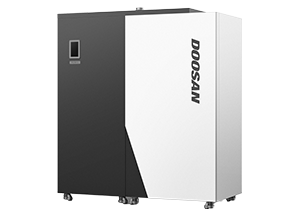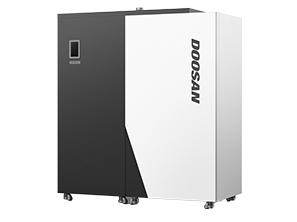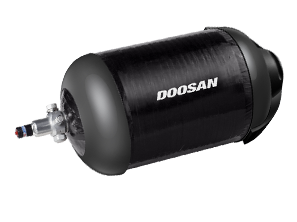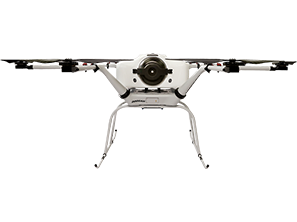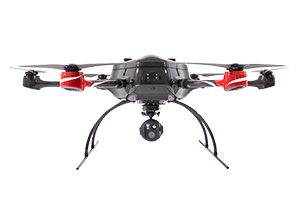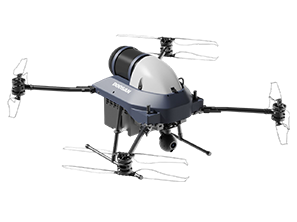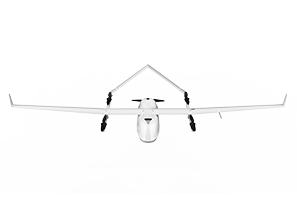News
Doosan Mobility Participates in 'UAM Team Korea': To Develop Fuel Cell Technology for Light and Heavy Flying Vehicles
Development of large-sized hydrogen fuel cell technology applicable to heavy and long-distance flight
2020.06.24
SEOUL -- On the 24th of June, Doosan Mobility Innovation (DMI) participated in the launching ceremony of the UAM Team Korea, an urban air traffic public affairs council hosted by the Ministry of Land, Infrastructure and Transport.
More than 40 institutions and companies, including DMI, participate in this council for realizing urban air traffic and building an industrial ecosystem.
Urban Air Mobility (UAM) is an eco-friendly, low-noise, three-dimensional transportation. The government announced on the 4th of 'K-UAM (Korean Urban Air Traffic) Roadmap', which will begin commercializing urban air traffic in 2025.
Urban air mobility (UAM) covers personal air vehicles (PAVs) and infrastructure such as a new navigation system, take-off and landing fields and charging technologies. PAVs or flying cars are emerging as a future system of travel to avoid traffic jams on urban roads as the doorstep-to-doorstep average speed for cars is predicted to degrade further.
A government road map was unveiled on June 4, calling for the commercialization of drone taxis in 2025 and autonomous flights in 2035. Pilots will board flying vehicles for about 10 years after the first stage of commercialization. The government plans to prepare operating standards by 2024.
In an inauguration ceremony led by the Ministry of Land, Infrastructure and Transport on Jund 24, 40 companies, research groups and state bodies signed a memorandum of understanding to implement the UAM road map.
DMI plans to carry out detailed tasks on the roadmap and conduct multilateral collaboration with participating actors. In particular, we plan to develop a large-scale hydrogen fuel cell technology capable of flying at medium and long distances (100-400 km), even with a high weight of 100-200kg, from a hydrogen fuel cell technology for logistics and cargo that can load 5 to 15kg.
DMI said, "DMI's hydrogen fuel cell technology can be applied to a variety of applications in addition to drones. We will do our best to play a leading role in this."
DMI successfully delivered emergency medical supplies between islands and islands 70km away hosted by the US Centers for Disease Control and Prevention through a drone flight in November last year. The drone 'DS30' was introduced to the African continent.
"South Korea is the first country to prepare a government-level road map and create a policy community in which the public and private sectors participate in order to realize UAM," Minister Kim Hyun-mee said in a statement. "We will spare no support and efforts to help Korean-style UAM grow into a world standard."
More than 40 institutions and companies, including DMI, participate in this council for realizing urban air traffic and building an industrial ecosystem.
Urban Air Mobility (UAM) is an eco-friendly, low-noise, three-dimensional transportation. The government announced on the 4th of 'K-UAM (Korean Urban Air Traffic) Roadmap', which will begin commercializing urban air traffic in 2025.
Urban air mobility (UAM) covers personal air vehicles (PAVs) and infrastructure such as a new navigation system, take-off and landing fields and charging technologies. PAVs or flying cars are emerging as a future system of travel to avoid traffic jams on urban roads as the doorstep-to-doorstep average speed for cars is predicted to degrade further.
A government road map was unveiled on June 4, calling for the commercialization of drone taxis in 2025 and autonomous flights in 2035. Pilots will board flying vehicles for about 10 years after the first stage of commercialization. The government plans to prepare operating standards by 2024.
In an inauguration ceremony led by the Ministry of Land, Infrastructure and Transport on Jund 24, 40 companies, research groups and state bodies signed a memorandum of understanding to implement the UAM road map.
DMI plans to carry out detailed tasks on the roadmap and conduct multilateral collaboration with participating actors. In particular, we plan to develop a large-scale hydrogen fuel cell technology capable of flying at medium and long distances (100-400 km), even with a high weight of 100-200kg, from a hydrogen fuel cell technology for logistics and cargo that can load 5 to 15kg.
DMI said, "DMI's hydrogen fuel cell technology can be applied to a variety of applications in addition to drones. We will do our best to play a leading role in this."
DMI successfully delivered emergency medical supplies between islands and islands 70km away hosted by the US Centers for Disease Control and Prevention through a drone flight in November last year. The drone 'DS30' was introduced to the African continent.
"South Korea is the first country to prepare a government-level road map and create a policy community in which the public and private sectors participate in order to realize UAM," Minister Kim Hyun-mee said in a statement. "We will spare no support and efforts to help Korean-style UAM grow into a world standard."


